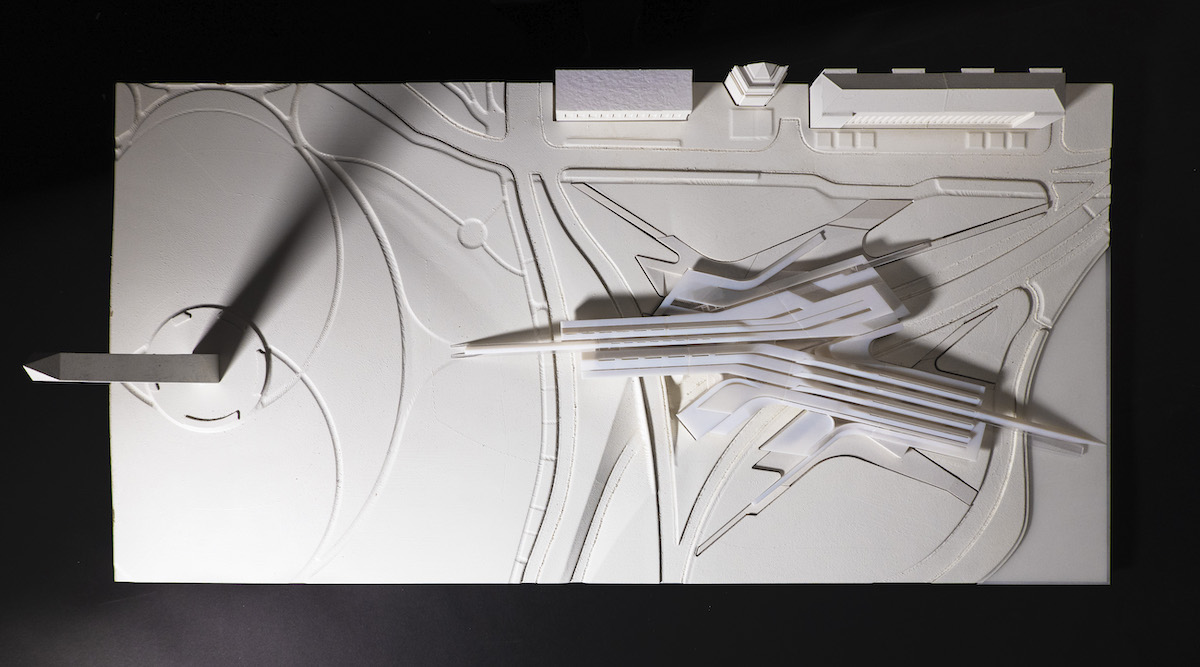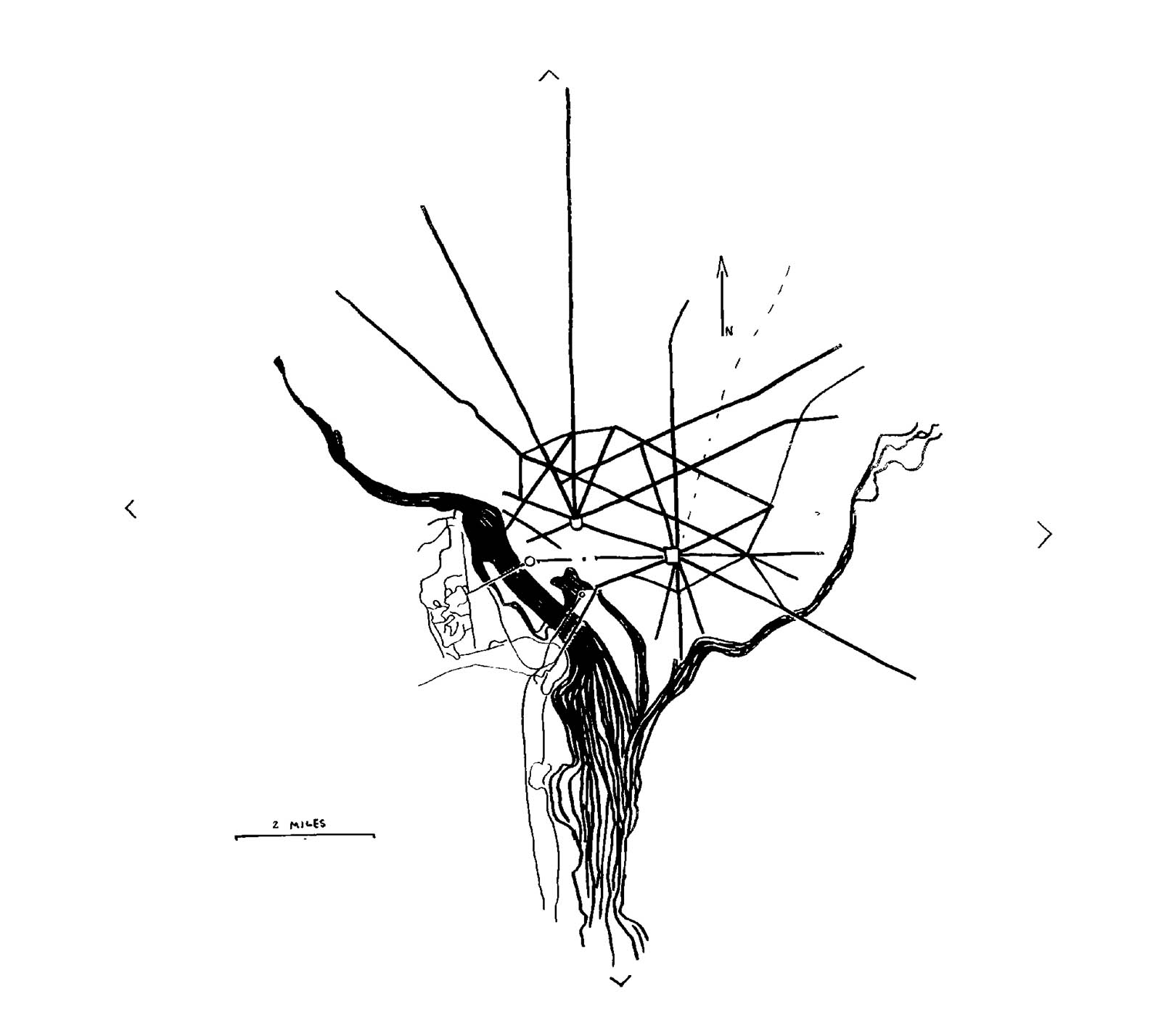The Anamorphic Double: A Bridge for DC
Uniquely called upon to embody purpose and beauty, bridges tend to be judged (more than any civic construction save the tower) on their singular object quality. The resolution of physics becomes synonymous with image, superimposing internal logic, with external symbolic forces of collective memory. This simultaneous condition, of rationality and iconicity, offers a double figuration: on the one hand, the instrumentalist objective to unify urban discontinuities, while on the other, the obligation to express the city’s identity. Amplifying this duality, bridges are both linear and volumetric, behaving as anisotropic entities, understood quite differently from the sequence of approach, than from a raking view. This bias could be said to lend itself to feeling (sensual experience) along the longitudinal axis, and knowing (shape recognition) in the transverse view. Or in Loos-ian terms, one might say that the interior experience is in the realm of culture, while the exterior countenance belongs to civilization. The result is a kind of urban anamorphosis in which a bridge might be seen through a lens of competing intrinsic and extrinsic figurations, offering fertile ground to reconcile formal / structural considerations with cultural / civic inquiry.
The studio will test the resolution of these competing interests within the context of the nation’s most iconic civic realm, the Mall in Washington DC. Students will explore the creative tension and formal possibilities inherent in the resolution of the physics and aesthetics of the bridge typology, while confronting the monumental scale of the nation’s capital. At a time of political and social discord, the studio will leverage the potency of civic force and the metaphor of connecting, through productive dialogues between the public realm (the haptic sphere of the individual vs the civic needs of the collective), tectonic assembly (dialogue between structure and skin, object and landscape), and iconic value (the intrinsically derived prosaic vs the extrinsically imposed poetic).
Students will identify a site and potential additional program based on their reading of the Mall’s past and future trajectory as both a modified riparian landform, and as a civic space for gathering, protest, commemoration and reflection.
The studio will hold workshops with structural engineers, and tentatively travel to DC to tour the Mall and nearby cultural destinations.
Projects
-

Surface of Confluence, An Infrastructural Museum on the National Mall
Grace La and James Dallman, Instructors
Spring 2019
-

Rain Bridge
Grace La and James Dallman, Faculty Advisors
Spring 2019